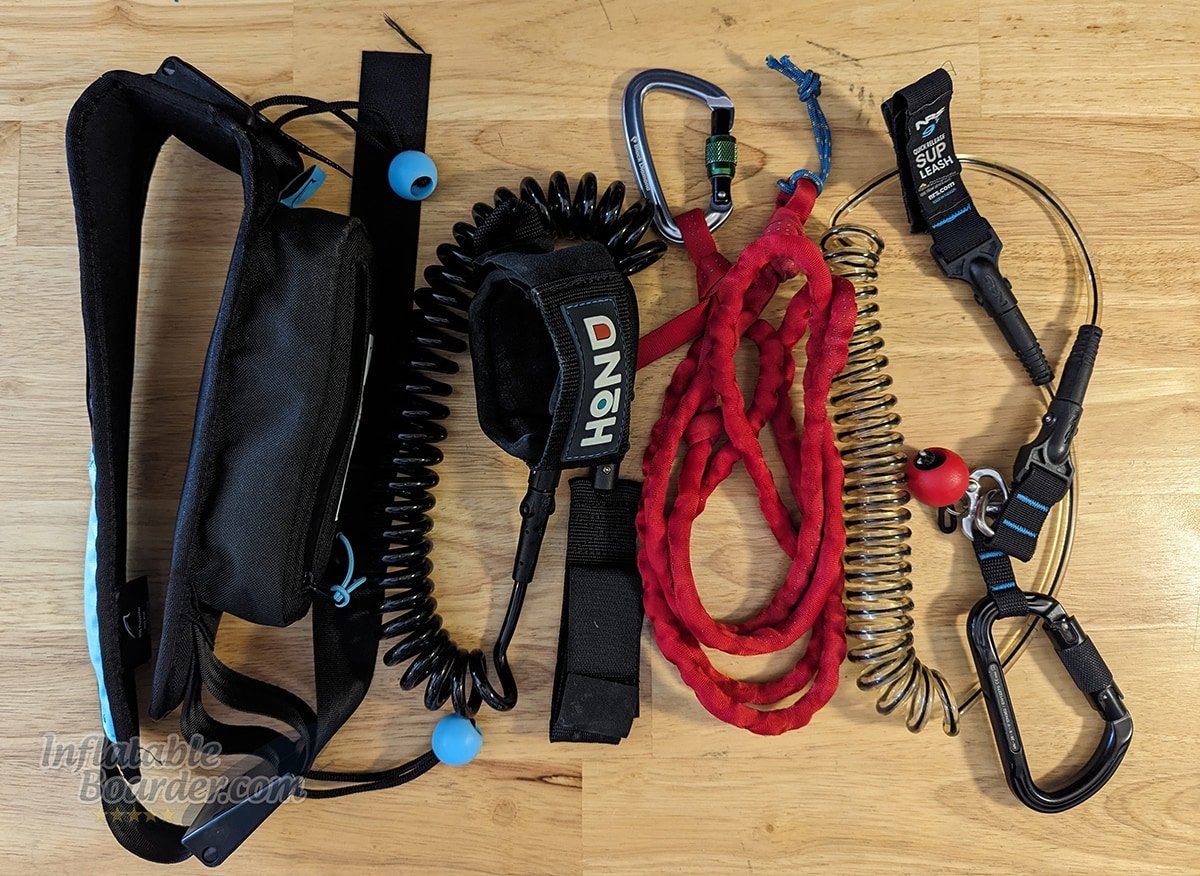
Modern paddle boarding takes a lot of cues from surfing, and that makes a whole lot of sense. The first recreational paddle boarders were surfers! One of the many things SUP has carried over from surfing is the leash.
Leashes are often viewed as a lifeline – a key piece of safety equipment that helps keep our board from floating away. After all, 200+ Liters of flotation can do a lot to help you in an emergency on the water. But that’s not always the case.
Sadly, every year leashes are also the cause of several fatalities on the water.
It’s important to understand not only when to use a leash, but what type of leash and when not to use one. Having and understanding your safety equipment is one of the four Pillars of SUP safety along with understanding your environment, planning and preparing for your trip/session, and knowing what to do in case of an emergency.
Types of Leashes
Paddle board leashes come in two basic varieties – coiled and straight.
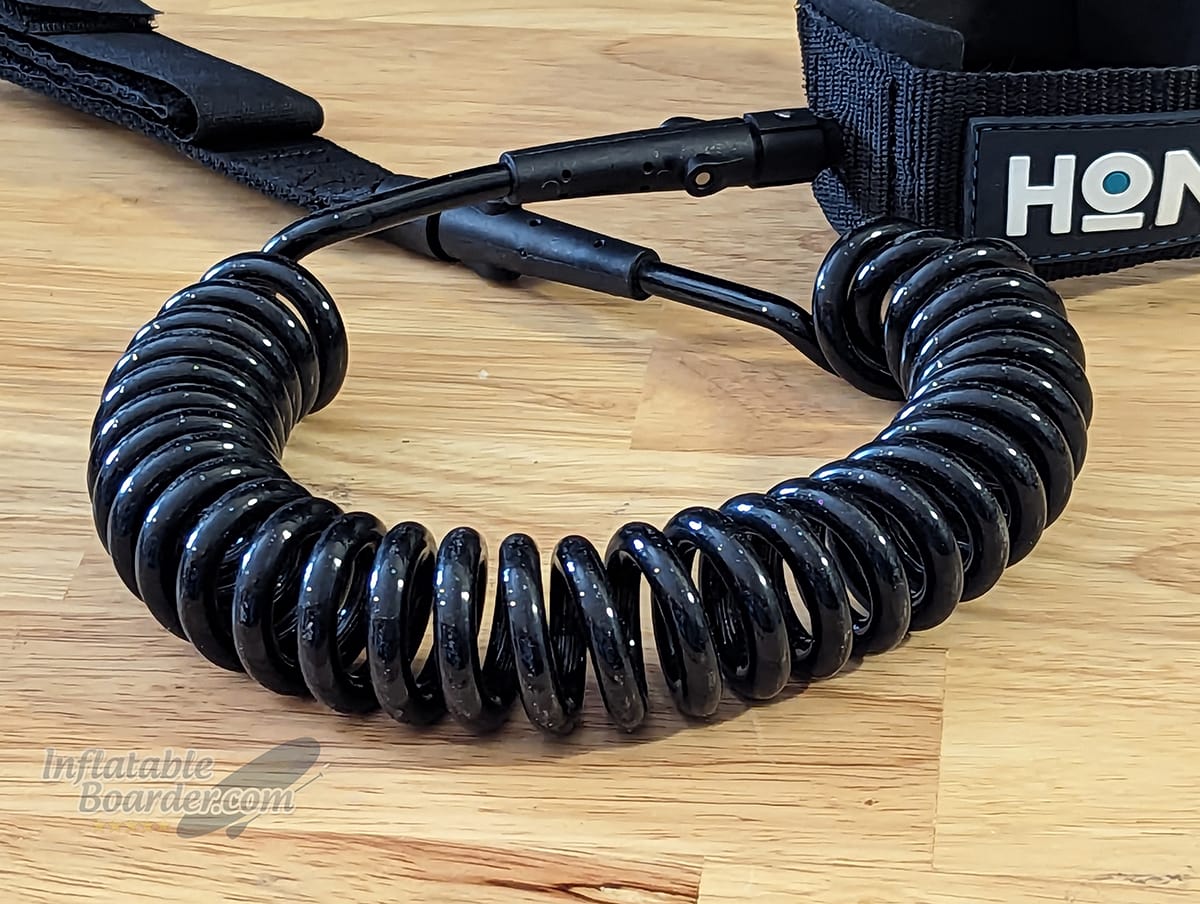
Coiled leashes are most common for stand up paddle boarding. These leashes have permanently coiled leads that stretch as you need them to move around on your board and contract to keep the lead out of your way when you don’t.
If you have a leash that came with your paddle board there’s a really, really good chance it is a coiled leash. These are the standard option for flat-water paddling.
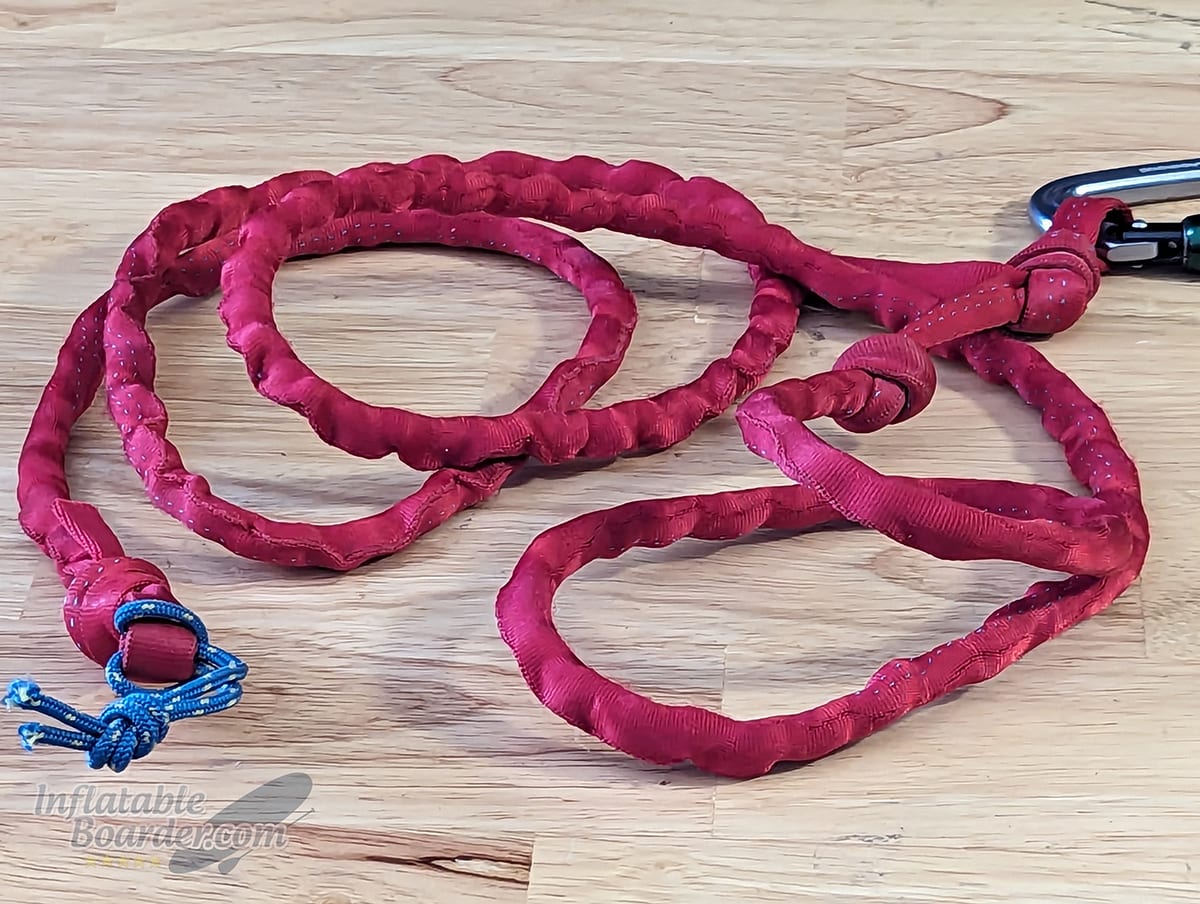
Straight leashes are less common for stand up paddle boarders. They do not have any coiling and are not made of elastic material. This keeps the lead loose and can drag in the water or become wrapped around your feet.
However, straight leashes are the leash of choice for SUP surfing. While you’re on the wave face the leash trails out behind you and is not in the way of your feet, but more importantly when you fall off a straight leash keeps your board attached and close at hand, but without the dangerous rebounding effect that happens with a coiled leash. In the surf zone a coiled leash can turn your board into a dangerous missile pointed right at you.
There are also some hybrid leashes that are mostly straight, but have some elasticity. These leashes are more like straight leashes than coiled leashes as they still maintain most of their length when not stretched.
There is a third general type of leash called a Quick Release leash, but these devices can have either a coiled or a straight lead. Standard leashes can also be converted to a Quick Release leash with Quick Release Belts. The key component of these Quick Release leashes is that they can be swiftly removed by triggering a release mechanism that is on your body. More on these leashes in a bit.
How to Wear Your Leash
Most SUP leashes have a lightly padded neoprene with a velcro cuff. These cuffs can come in different sizes and can usually be worn around either the ankle or the calf. Folks with larger calves and a smaller leash cuff may not be able to wear every leash around their calf.
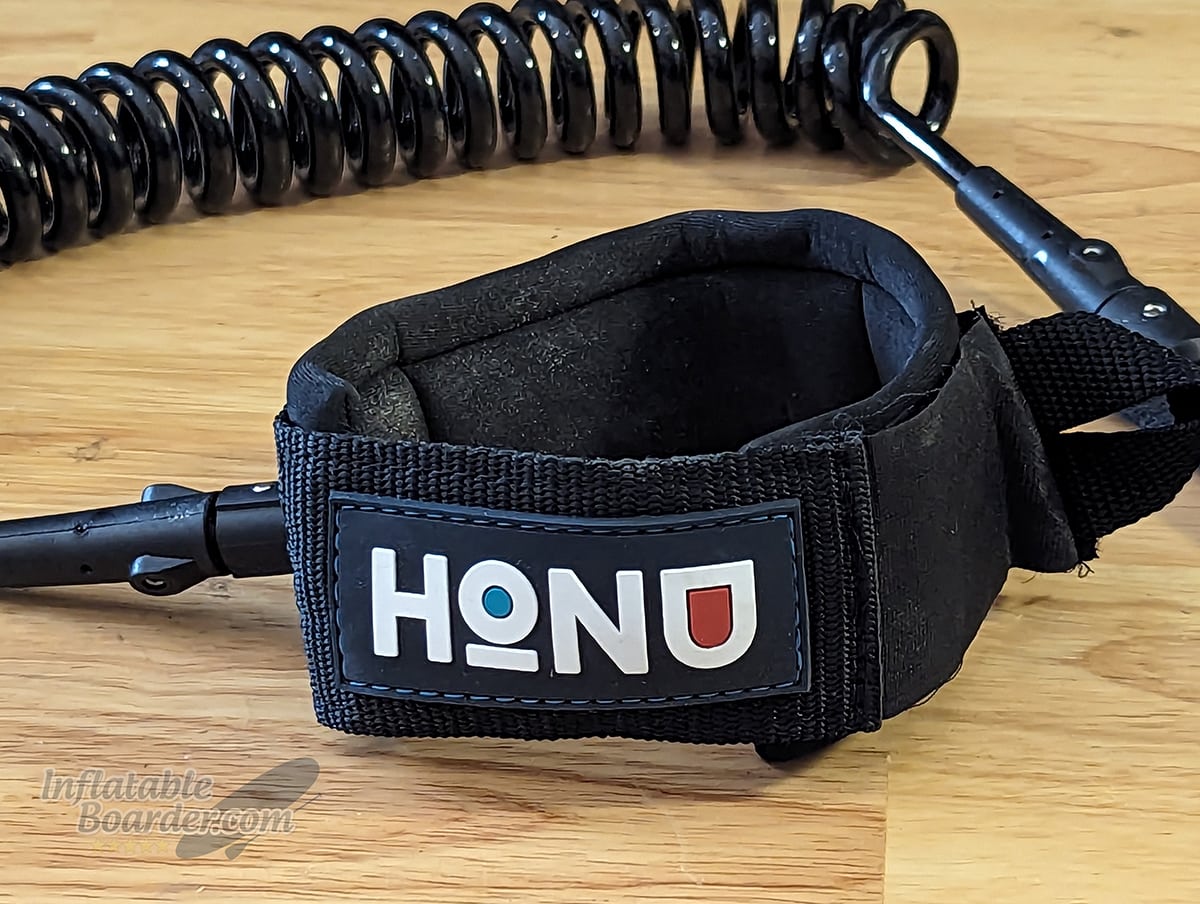
Whether to wear your leash low on your ankle or higher on your calf is a matter of personal preference. Wearing your leash low on your ankle can give you a little more distance on the leash – particularly helpful for SUP surfing or for those who like to use the front of their board more. Wearing the leash on your calf helps keep it up and away from your feet, especially when stepping back to the tail of your board.
Quick release leashes and belts must always be worn around your waist or torso.
Quick Release Leashes
I’ve mentioned them twice now, so I guess it’s time to talk about Quick Release leashes. Quick Release (QR) leashes are primarily used in two situations.
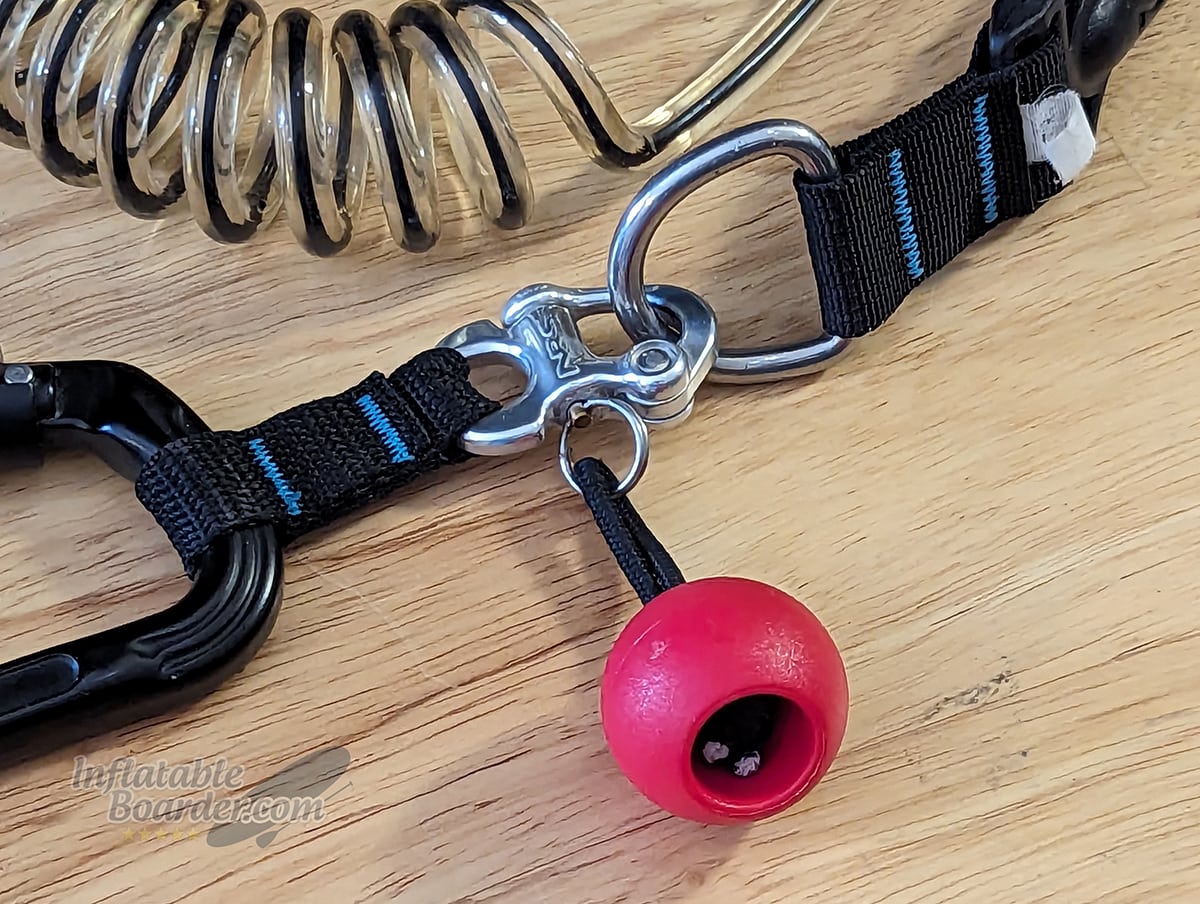
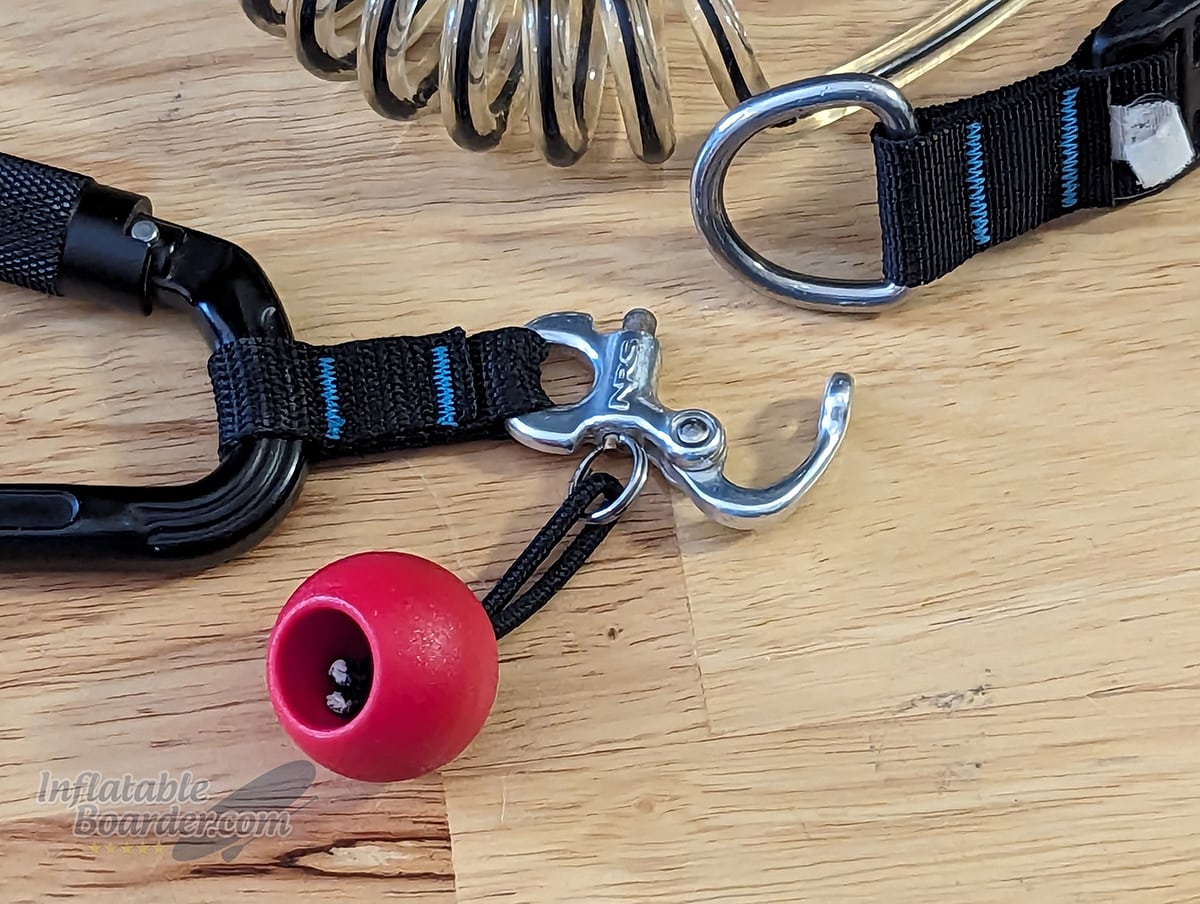
The first is by racers with beach finishes. It’s a small subset of the sport, but some paddle board races end with a required sprint up the beach (leaving your board at the water’s edge). Here a QR leash can be quickly removed at the last moment with a single arm movement.
The more common use of a QR leash is on rivers and moving water (tidal estuaries, races, etc). In fact, the only leash that should be used on moving water is a Quick Release leash worn around your body.
Moving water is an extremely powerful force. We’ve all been told not to drive through flooded roads, and that it only takes a few inches of moving water to force a car off the road. I’m a big paddler, but I don’t come close to the size of a car! It doesn’t take much water, or even incredibly fast water, to trap a paddler who’s leash has become tangled or caught.
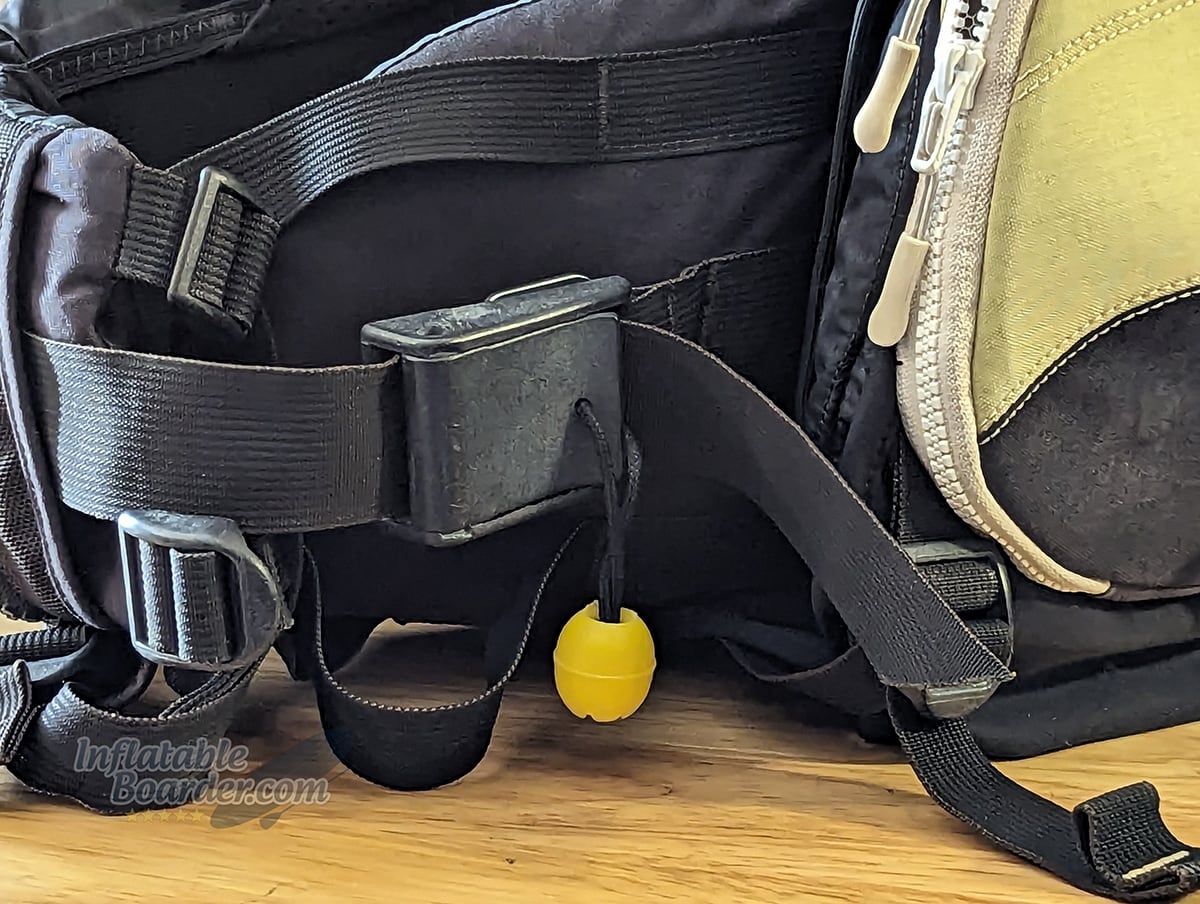
Buoy chains, trees, rocks, bridge pylons, and a whole host of other potential hazards in the water can tangle and hold a leash. When this happens the moving water forces your body to lay out downstream and eventually presses you down in the water column, even while wearing a PFD. If you are wearing an ankle or calf leash, there is an extremely high chance that you will not be able to reach your leash in this position (especially with water forcing itself into your nose, eyes and mouth).
Here is a video clip demonstrating this effect in a controlled situation. The water is not even waist deep and is at a moderately low flow speed for a river.
It is critically important to wear only Quick Release leashes that are mounted to your waist or body when paddling on moving water.
Reliability and Safe Setups
In recent months there has been quite a buzz in the community about QR leash failures. There was a study in the UK done that had a significant number of failures (though complete results have not been released) and a recent video clip of a shackle-style QR leash failing in practice, and another failing during testing.
I personally use a shackle-style Quick Release leash, however after seeing this study and examples I will be using it with one condition – it must be attached to me via another Quick Release device. This could be the Quick Release strap on a Type V whitewater PFD, or a dedicated Quick Release belt like this one from Bluefin SUP.
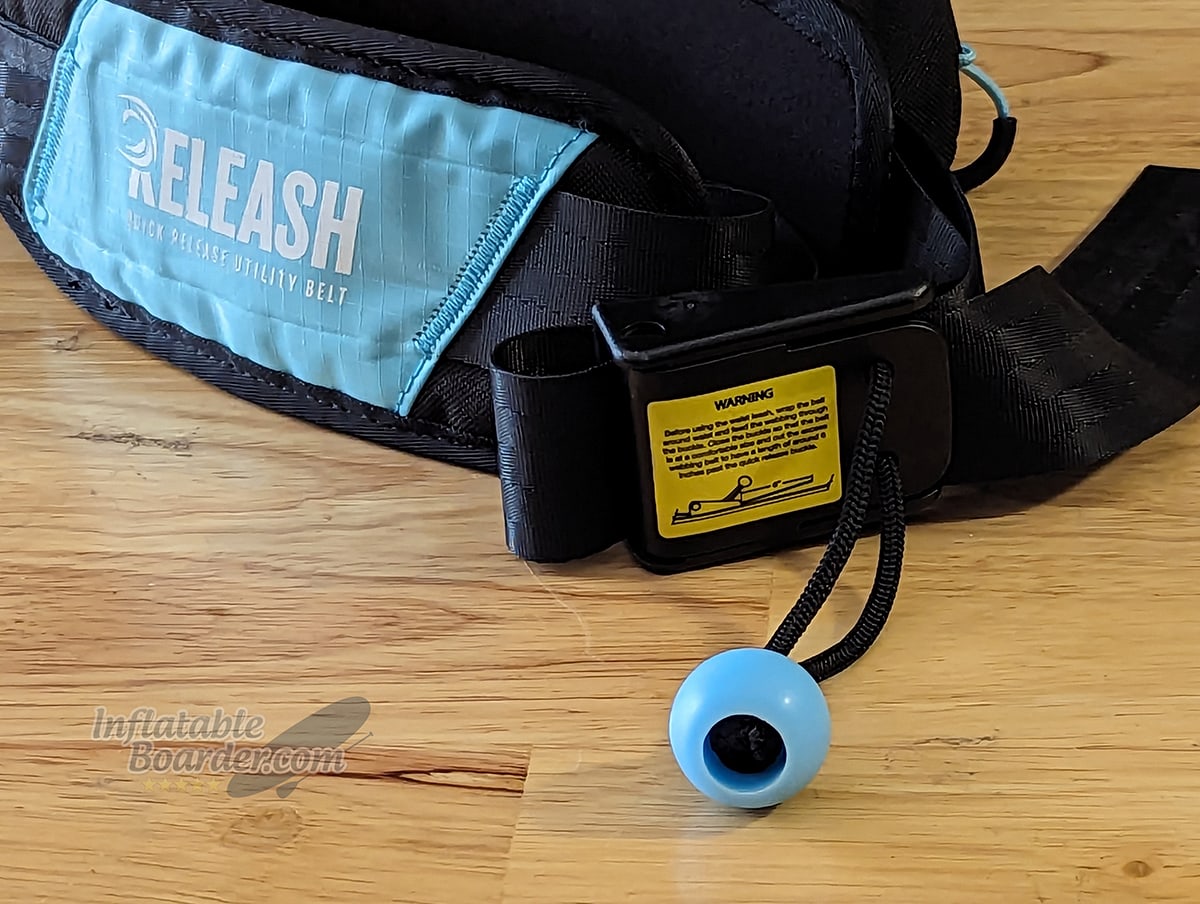
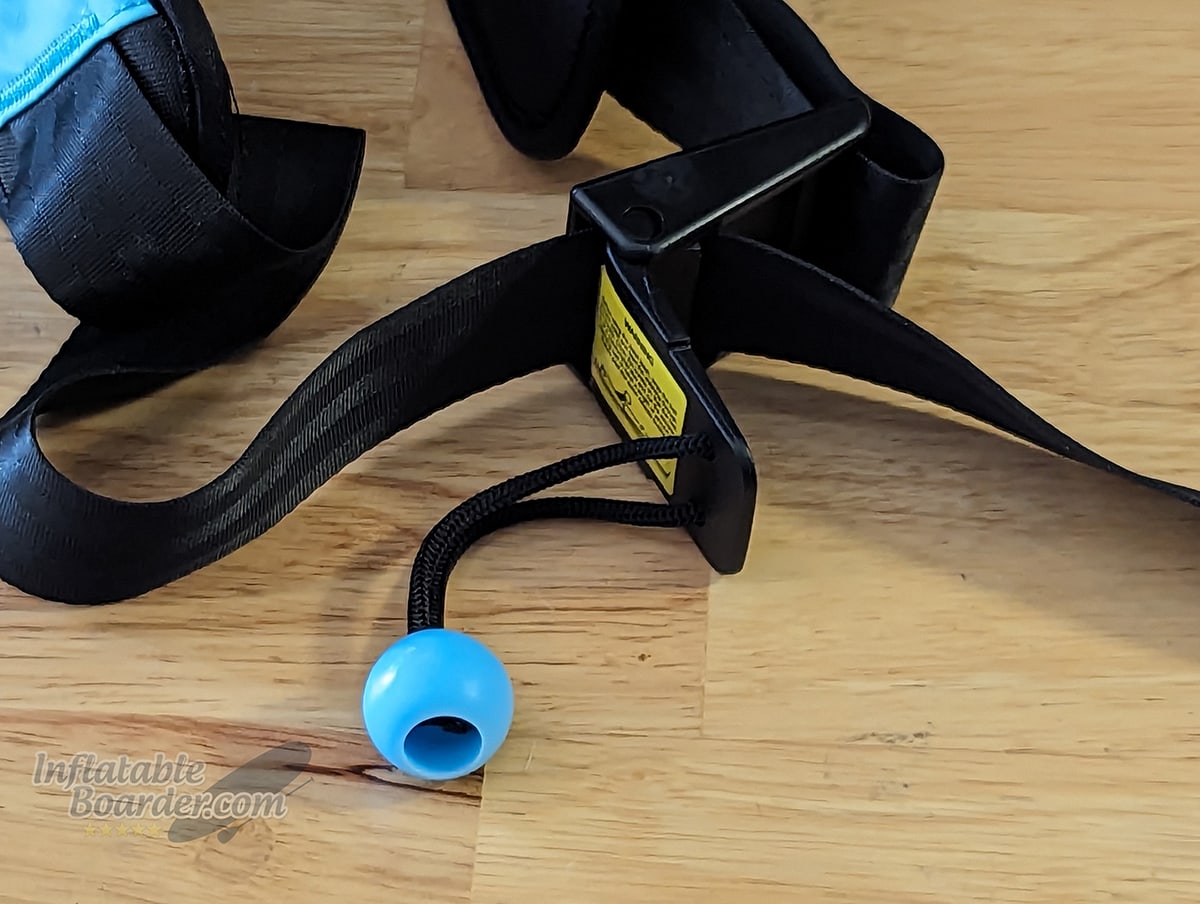
The shackle-style releases place all of the pressure in the system at a 90° direction to the release pin, making it harder to release than it is when it’s not under tension. If the release pin is not pulled straight out, it does not come out, and the pull tab may break.
The strap/belt-style devices use a buckle to pinch a strap in place and the leash is then connected to the strap. Because the buckle is pinching the strap, it is not impacted by the tension in the system, but you do still have to pull the release tab perpendicularly away from the belt (pulling up or down won’t release the buckle).
Kite surfers have a different style of Quick Release device (that I’ve just learned about) that seems to be more promising in terms of reliability, but does require more care in the setup. Once it is set appropriately all you have to do is push the handle along the leash away from your body to release the mechanism (demonstrated in the second video link above). We’ll need to do more testing with these systems before recommending them, though.
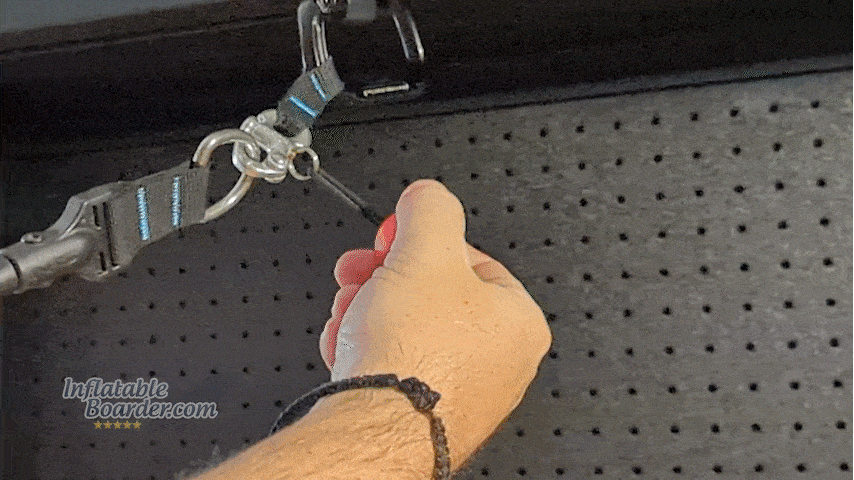
Practice Practice Practice!
That brings us to the last point about QR leashes. No matter what system you decide to use, you need to have practiced (regularly) engaging the system. Standing in your living room practicing is a start, but ideally you need a few buddies in a controlled water environment (like in the Nottingham Whitewater video above) to really practice for an emergency.
When NOT to Wear a Leash
Yes, there are times when it’s best to not wear your leash. The two most common examples both occur on moving water.
First – if you are paddling through the moving water of a tidal race or estuary on your way to flat water. In this scenario most paddlers will have an ankle or calf leash attached. That leash should be removed while you are on the moving water section of your journey and replaced once you are back on flat water or in the surf zone.
Some people recommend simply loosening the leash so you can slip it off your foot if needed, however there’s a fine line between loose enough and too tight, especially in an emergency situation where you may not have the sense of direction or coordination to shake a loosened leash off your foot. It’s far better to remove the leash entirely and then replace it later.
Second – if you are paddling on moving water (rivers, streams, estuaries, tidal races, etc.) and you do not have a Quick Release leash. In this case it is better to wear no leash at all than it is to wear a potential hazard around your leg. You can, however, convert a standard coiled or straight leash to a Quick Release leash by attaching it to a Quick Release device like a Quick Release belt. This is usually much less expensive than buying a dedicated QR leash and very simple to use.
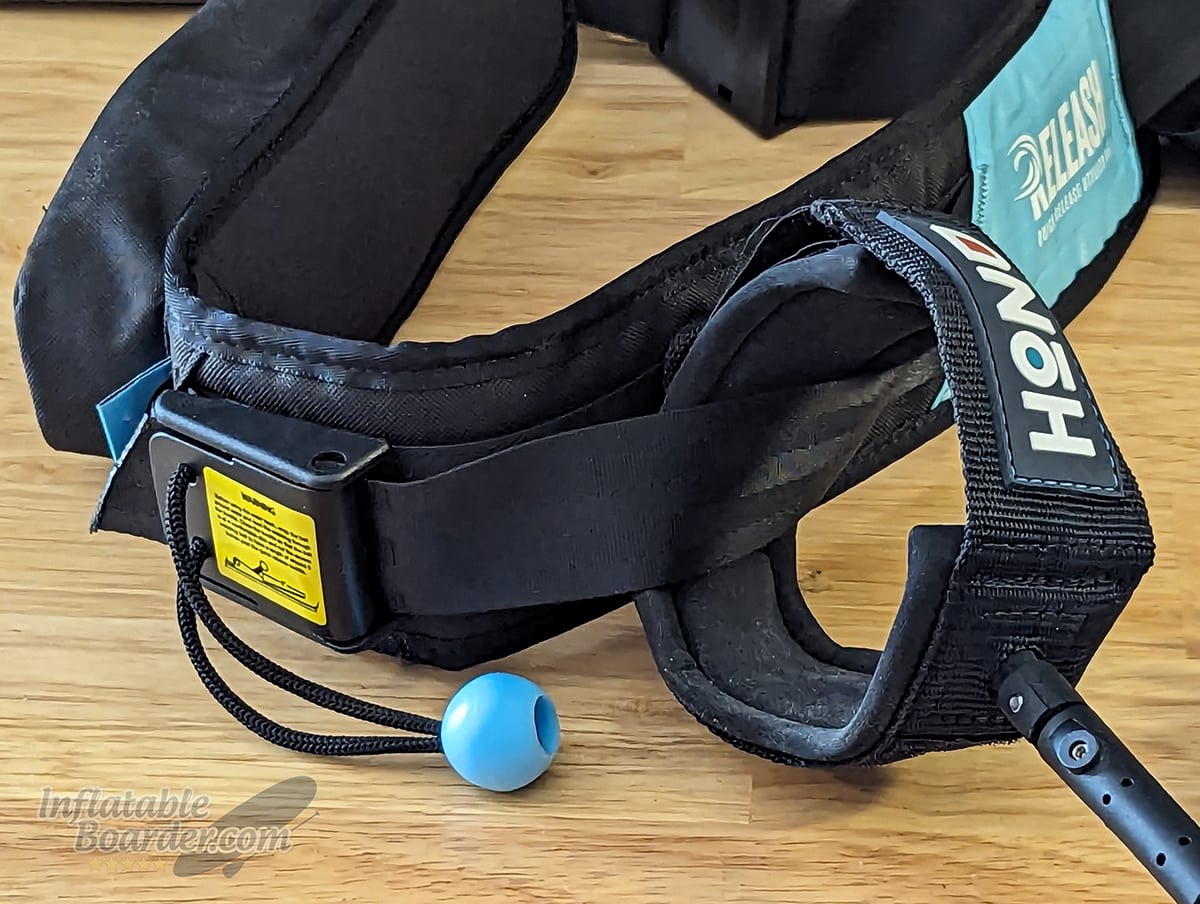
If leashes are important safety equipment, isn’t it dangerous to not wear a leash while paddling? I’m glad you asked!
While leashes do offer a measure of safety in our paddling adventures, they are not the only safety equipment we use. Your Personal Floatation Device (PFD), Life Jacket, or Buoyancy Aid is the most critical piece of safety equipment to use while paddling. To that, paddling with other people and always carrying a reliable communications device are other critical safety measures all paddlers should take.
All of these precautions work together to keep you safe. They all also function a bit like the airbags and seatbelt of your car. When you need them, you need them immediately and do not have time to put them on. Not wearing a PFD is, year after year, the primary cause of boating fatalities in the United States.
Final Thoughts on Paddle Board Leashes
Paddling safely is the first step to having fun on the water. Leashes are just a small part of the spectrum of safe choices for stand up paddle boarding. Choosing the right leash can make your time on the water both more safe and more comfortable.
Always make sure to check your leash for damage and wear as they do break down over time from physical damage, UV damage, corrosion, and other environmental factors. Make sure you select the appropriate leash for your environment, and practice using any safety equipment you carry.
This year I was honored to help friend of the site and New Zealand’s National SUP Safety Officer Bill Dawes with his wonderful book series on SUP Safety, now available as a digital download. There’s a ton of great information there on all four Pillars of SUP safety, including more about leashes and other safety equipment, for paddlers all over the world and of all disciplines.
Happy paddling!
